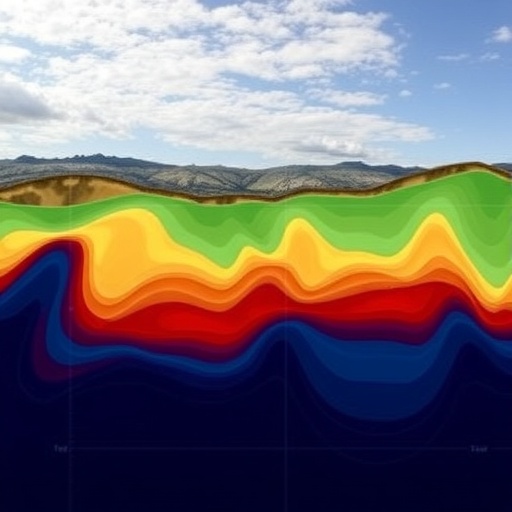The ocean’s structure is fundamentally affected by stratification, a state where different water layers exhibit various temperatures and salinities. This stratification leads to a separation based on density, with warmer, less salty water residing above colder, saltier water. This vertical layering plays a crucial role in the ocean’s capacity to exchange heat, carbon dioxide, oxygen, and nutrients. As climate change progresses, the stratification patterns are evolving, with significant implications for marine ecosystems and global climate dynamics.
Researchers have observed a marked increase in ocean stratification, quantified at around 0.8 ± 0.1% per decade over the last sixty years. This statistic reflects analyzed data from the upper 2,000 meters of the ocean, a critical zone for biological and chemical activity. The most drastic changes are evident in tropical regions, where rising temperatures have primarily driven the stratification increase. The implications are profound as these shifts reflect the ocean’s response to global warming and the continuous alterations to its thermal structure.
In forthcoming years, predictive models suggest that this increase in stratification will not only continue but potentially accelerate. Under various climate scenarios—known as Shared Socioeconomic Pathways (SSPs)—current projections indicate that the ocean’s stratification could rise significantly by the end of this century. For instance, stratification increases of around 0.7% to 2.9% per decade are anticipated under different SSP trajectories, relative to data collected between 2010 and 2020.
The stratification patterns observed are not merely numbers; they bear substantial consequences for climatic and ecological dynamics. Changes in ocean stratification impact heat uptake, as warmer surface waters hinder the vertical mixing that typically distributes heat throughout the water column. This phenomenon may exacerbate regional climate extremes, influence weather patterns, and even intensify the frequency and severity of tropical storms and cyclones. Understanding these processes is critical for modeling future climate scenarios accurately.
As the ocean becomes warmer and more stratified, deeper waters tend to hold more nutrients, which can affect the productivity of marine ecosystems. For marine life, particularly in regions that rely on upwelling nutrients for their survival, increased stratification could disrupt the delicate balance that sustains fisheries and biodiversity. Alterations in the nutrient cycles could lead to shifts in species distributions and food webs, affecting everything from plankton to larger marine predators.
Moreover, stratification influences the ocean’s ability to absorb carbon dioxide, a critical property in regulating atmospheric greenhouse gas levels. As the upper ocean layers become more stable, their capacity to sequester carbon diminishes, potentially accelerating the pace of climate change. This interplay between ocean stratification and carbon cycling necessitates a deeper understanding of how marine systems will respond to ongoing changes in temperature and salinity.
Recent studies emphasize the need for better models that can predict stratification changes at critical layers of the ocean. The nuances of stratified water layers, such as the thermocline or the halocline, can hugely affect marine life and climatic feedback mechanisms. These models will allow scientists to fine-tune their predictions concerning future ocean states, offering valuable insights for policymakers addressing climate-related challenges.
In conclusion, the ongoing and projected increases in ocean stratification reflect a significant shift in our planet’s climate system. The consequences of these changes are too critical to overlook; they stretch across ecological, climatic, and biogeochemical domains. As research progresses, continued exploration of the drivers behind stratification changes is vital. These findings will not only enhance our understanding but also inform conservation efforts and climate adaptation strategies essential for the sustainability of marine ecosystems.
The urgency of addressing these ocean changes is underscored by the catastrophic impact projected on marine species and human communities dependent on ocean health. The convergence of rising temperatures and stratification signifies that without immediate action, both marine biodiversity and the human practices reliant on the ocean could face unprecedented challenges. Collective efforts in scientific collaboration, policy-making, and public awareness are needed now more than ever as we navigate the intricacies of our warming planet and its oceans.
Moreover, as the ocean stratification continues to shift, the implications will resonate beyond remote marine ecosystems. Coastal communities, whose economies are deeply intertwined with ocean health, may experience changes in fisheries, aquaculture, and recreational activities. Preparing for these changes is crucial, and it requires a concerted effort from researchers, policymakers, and local communities alike. Adaptation strategies should be rooted in sound science, promoting resilience against the anticipated variability in marine ecosystems.
By acknowledging the projected trends in ocean stratification and their consequences, we can better prepare to face the challenges that lie ahead. Scientists must remain vigilant, disseminating their findings and encouraging proactive measures to mitigate the anthropogenic forces driving climate change. In essence, understanding and responding to the ongoing changes in ocean stratification is not merely an academic exercise; it is a prerequisite for safeguarding the extensive and invaluable services the ocean provides to life on Earth.
Subject of Research: Ocean Stratification and Climate Change
Article Title: Ocean stratification in a warming climate.
Article References:
Cheng, L., Li, G., Long, SM. et al. Ocean stratification in a warming climate. Nat Rev Earth Environ 6, 637–655 (2025). https://doi.org/10.1038/s43017-025-00715-5
Image Credits: AI Generated
DOI:
Keywords: Ocean stratification, climate change, marine ecosystems, heat uptake, carbon cycling, tropical cyclones, biodiversity, nutrient cycling.




